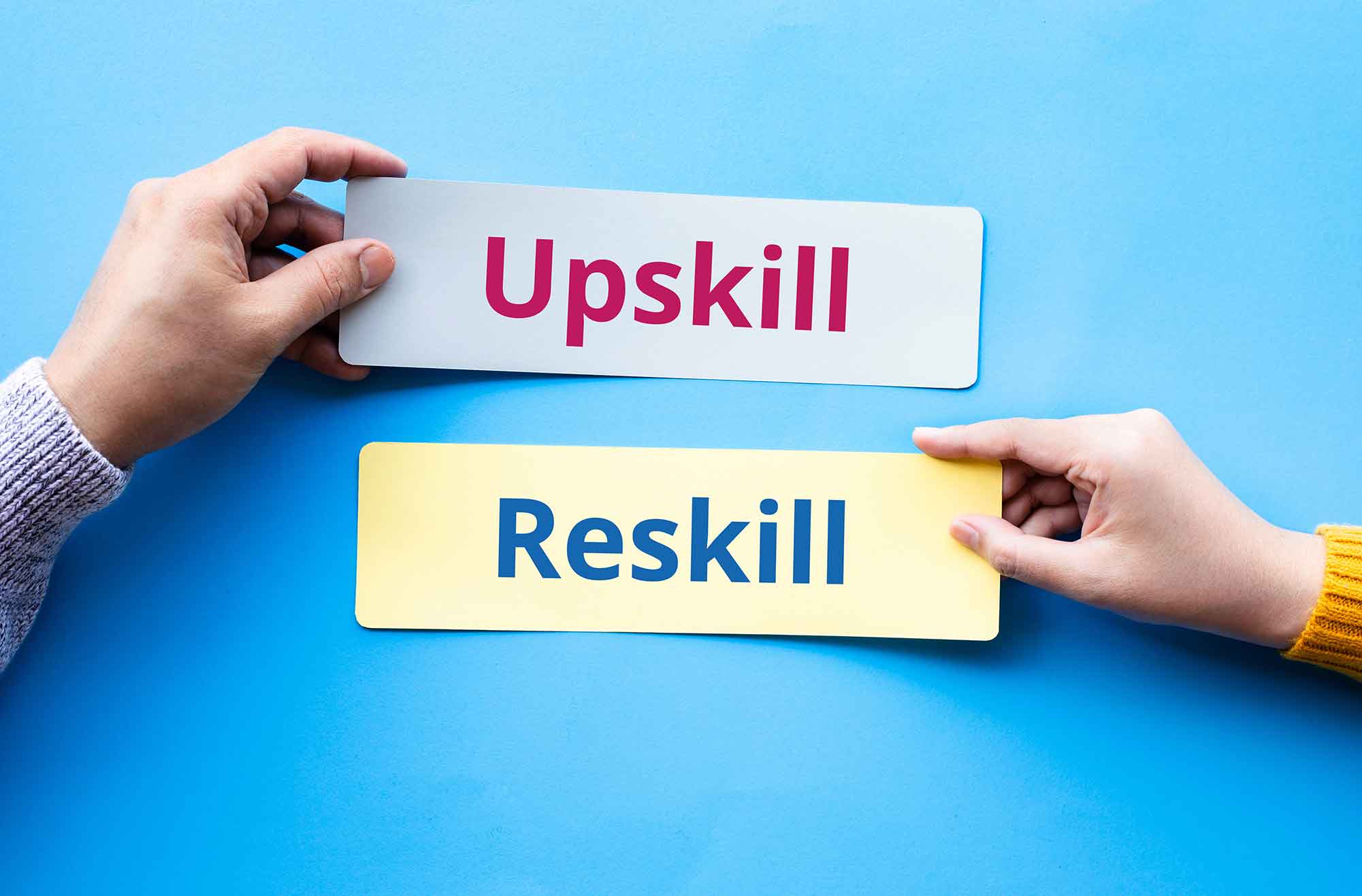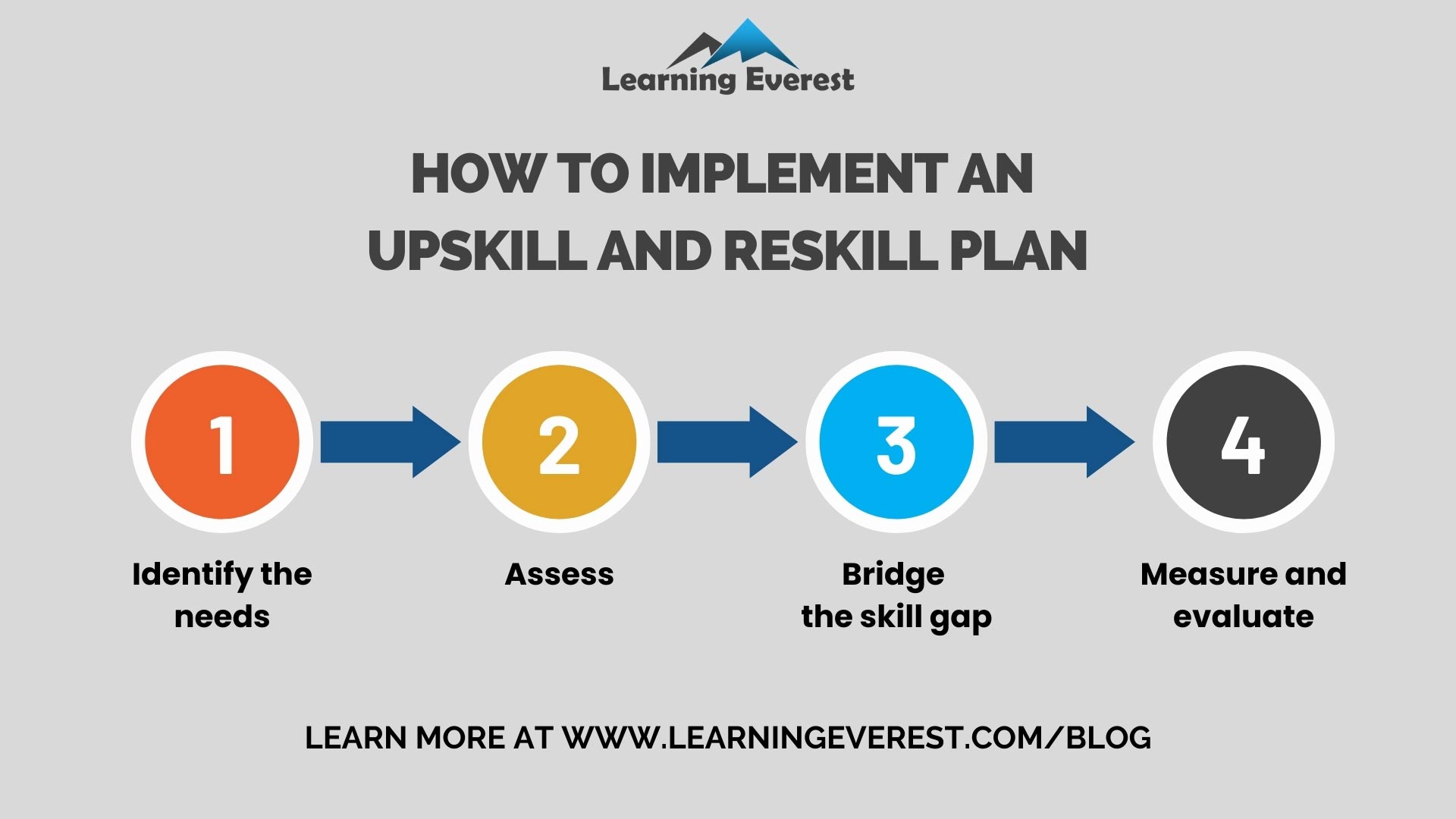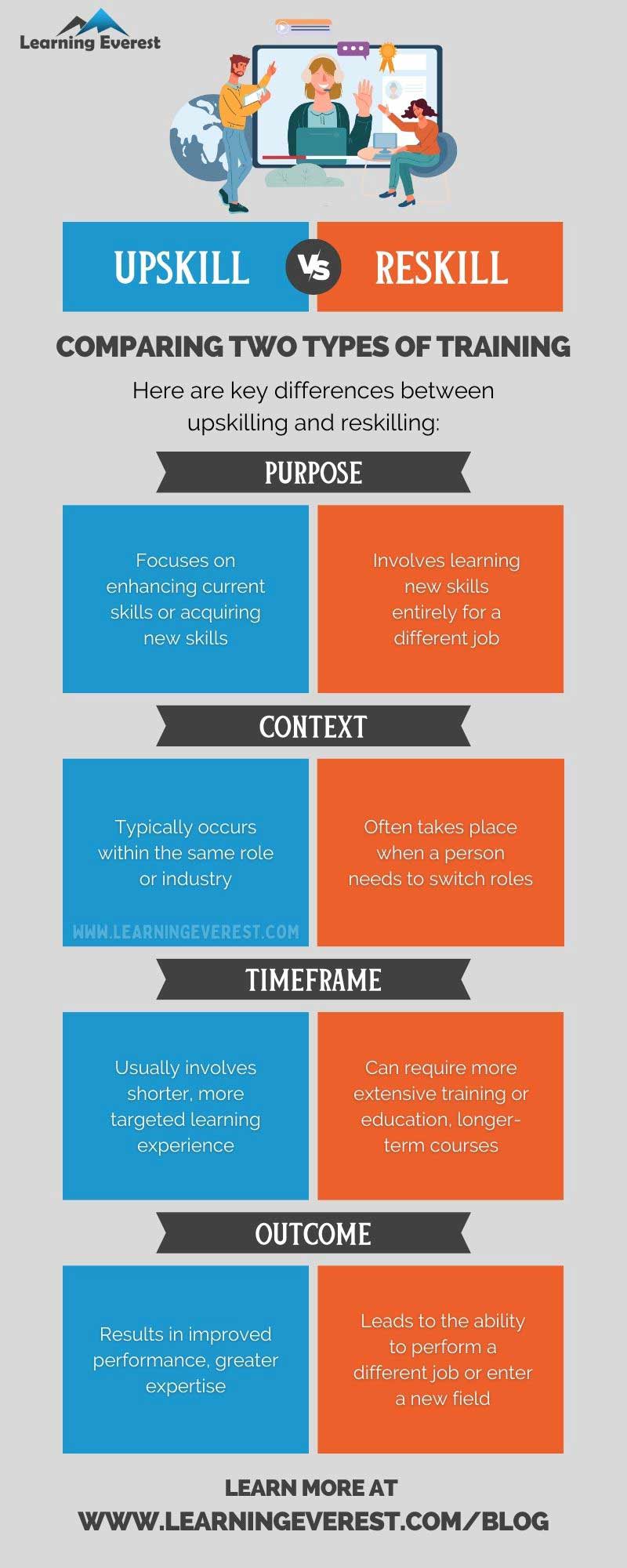As per a report from McKinsey, 87% of organizations say they already have employee skill gaps or are expecting them within a few times. Isn't the percentage alarming? The same report also says that 53% of executives/leaders say that building skills is the most important action to close the ability gaps, followed by hiring more talented individuals, redeploying, and engaging freelancers or contractors in the workplace.
The solution? Upskilling and reskilling!
Table of Contents
What is upskilling
Upskilling is the way of training employees in advanced hard and soft skills/knowledge related to their current job roles. Think about it as “leveling up” your skills. This helps employees to remain competitive, take on new tasks and responsibilities, and keep up with evolving job needs, changing industry trends, and modern technological advancements. In similar words, upskilling helps your employees expand their knowledge and expertise within the same field or domain. Through upskilling, you could:
- Progress toward goals
- Remain competitive in the job market
- Qualify for a promotion
- Secure a new job
- Earn a higher salary
- Continue self-improvement
Upskilling is mainly a more intentional learning process where you will gain exposure to that better knowledge sooner through skills development training courses, certifications, or through mentorship programs. Depending on your job role, you may find it beneficial to elevate your workplace skills, technical skills, or both.

Upskill and Reskill
What is reskilling
Whereas upskilling involves elevating your current skill set, reskilling, on the other hand, is a training strategy in which you teach an existing employee a completely new skill from their current position. Often, this involves transitioning to a new team or department, usually because of a changing requirement in job roles or the skills/knowledge becoming less in demand for some reason. As technology makes more and more work obsolete, and automated, reskilling helps you to retain employees by putting them in a new job position without losing their industry knowledge, skills, and relationships with customers and coworkers.
Benefits of reskilling include:
| For employers | For employees |
|---|---|
| Avoid employee layoffs and rehiring | Change career paths |
| Cost-savings compared with hiring new employees | Adapt to a changing workforce due to automation and digitalization |
| Reduce employee turnover | Feel a greater sense of job security |
What is the difference between upskill and reskill?

What is the difference between upskill and reskill?
The main difference between these two concepts (i.e., upskill and reskill) lies in the objective/purpose of the training: whereas upskilling aims to teach employees new skills to optimize their performance, reskilling — also can be known as professional recycling — sets out to train the employees to adapt to a different position within the organization. In general terms, the former is said to create more specialized employees and the latter more versatile ones.
The benefits of upskill and reskill
Though the difference there are some benefits of these two types of training including:
- They bridge the digital divide at the heart of any organization and make it more competitive.
- They mean less selection procedures and, therefore, shorter adaptation periods.
- They help to create loyalty and talent retention. Employees are aware that the organization is investing in them to improve their professional profile.
- Offering continuous training enhances the corporate reputation.
- They contribute towards the achievement of the UN Sustainable Development Goals (SDGs), specifically numbers 8, 9 and 10.
- They encourage a dynamic business culture adapted to an environment in constant evolution.
How to implement an upskill and reskill plan
Although every organization has its own methods, the steps for implementing a reskilling and upskilling plan may be summarized as follows:

How to Implement an Upskill And Reskill Plan
Let’s discuss this in detail.
Step no. 1 – Identify the needs
The very first step in bridging the skills gap is identifying what is missing in your business. This can be done through employee feedback, surveys, tests, assessments, interviews, and performance evaluations. These tools will help you identify the right employees within the workforce who need to update their skills or are ready to increase their existing knowledge or skill sets.
Study the requirements of the business to establish which new positions and skills the company needs. As you develop your employee skills framework, ensure that the upskilling and reskilling training initiatives align with your organization’s strategic long-term goals. This includes identifying key skills/knowledge needed to achieve those goals and making them a top priority in your learning and development programs.
Want to learn more? Read our blog on 5 Steps of Conducting an Effective Needs Assessment.
Step no. 2 – Assess
The second step is to carry out an assessment of existing workforce skills so that, depending on business needs, you can work out who needs upskilling and who needs reskilling. The more data you have, the more likely your needs assessment is to succeed. Some questions you can ask when gathering information include:
- Where are improvements needed?
- Why are current methods underperforming?
- What activities must be done to accomplish your objectives?
- What is the probability your solution will be a success?
- What does excellent performance look like?
- Does the organization have enough resources to execute a more successful process?
All these data will lead you to your training objectives. Read our blog on Workplace Training Objectives Examples: How To Create Them for Your Team to learn more.
Step no. 3 – Bridge the skill gap
After you understand the gaps and have a framework that aligns with your organizational culture, you can development employee training programs to help bridge the skill gaps. This often includes some combination of internal learning and development, external courses, workshops, seminars, online courses, mentoring, job rotations, and certification programs. You can design a training system for different job profiles, making training easy through various digital tools and favorable hours, preferably within the working day.
You need a proper training plan for this. A training plan structures your organization’s training process in an effective and meaningful way. Read our blog on 7 Steps for Building Training Plan for Staff to learn more.
Step no. 4 – Measure and evaluate
Evaluation is an important component of success. It is important to keep track of your employees’ progress to understand the effectiveness of your training programs. You can then develop metrics to measure your reskilling and upskilling initiatives, then measure the progress of participants to assess their performance improvements. Use feedback and data from metrics to refine and improve your programs. Investing in a learning management system (LMS) allows you to deliver and manage your learning and training initiatives.
You can host your employee training courses on the LMS and ensure seamless access for your geographically dispersed workforce. Don’t forget to carry out a continuous assessment after or in between your training programs to determine the level of growth and analyze the level of employee response.
How do you measure the impact of your training and development initiatives at your organization? Read our blog on 8 Key Performance Indicators (KPIs) for Training and Development that can transform how you assess, refine and value your training strategies.
Did you find it interesting? Schedule a meeting with us!
Infographic
Knowledge check!
Frequently Asked Questions (FAQs)
What is upskilling?
Upskilling is the way of training employees in advanced hard and soft skills/knowledge related to their current job roles.
What is reskilling?
Reskilling, on the other hand, is a training strategy in which you teach an existing employee a completely new skill from their current position.
What is the difference between upskill and reskill?
The main difference between these two concepts is that whereas upskilling aims to teach employees new skills to optimize their performance, reskilling sets out to train the employees to adapt to a different position within the organization.






